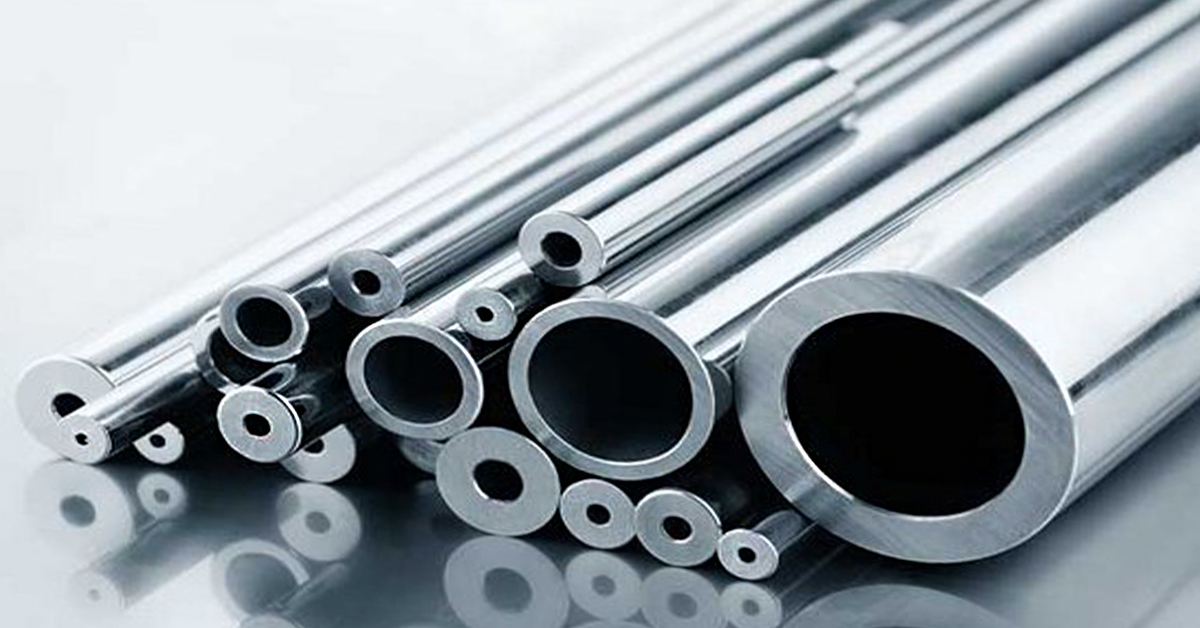What kind of stainless steel is not easy to rust?
There are three main factors affecting the corrosion of stainless steel:
1. The content of alloying elements.
Generally speaking, the content of chromium in 10.5% steel is not easy to rust. The higher the content of chromium nickel, the better the corrosion resistance. For example, the content of nickel in 304 material is 8-10%, and the content of chromium is 18-20%. Such stainless steel will not rust under normal circumstances.
2, the smelting process of the production enterprise will also affect the corrosion resistance of stainless steel.
The large stainless steel plant with good smelting technology, advanced equipment and advanced technology can be guaranteed in the control of alloying elements, the removal of impurities, and the control of steel billet cooling temperature, so the product quality is stable and reliable, the internal quality is good, and it is not easy to rust. On the contrary, some small steel plant equipment backward, backward technology, smelting process, impurities can not be removed, the production of products will inevitably rust.
3. External environment, dry climate and good ventilation are not easy to rust.
And the air humidity is large, continuous rainy weather, or the air containing a large pH environmental area is easy to rust. 304 stainless steel, if the surrounding environment is too poor, it will rust.
Stainless steel appears rust how to deal with?
1. Chemical methods
With the aid of pickling paste or spray to passivate the corroded parts to form a chromium oxide film to restore its corrosion resistance. After pickling, in order to remove all contaminants and acid residues, it is very important to properly rinse with clean water. All treatment with polishing equipment to re-polish, with polishing wax can be closed. The local slight rust can also be used 1:1 gasoline, oil mixture with a clean rag to wipe the rust.
2. Mechanical methods
Sandblasting, peening, obliterating, brushing and polishing with glass or ceramic particles. It is possible to mechanically wipe away contamination caused by previously cleared, polished, or obliterated material. All kinds of pollution, especially foreign iron particles, can be a source of corrosion, especially in humid environments. Therefore, the mechanical cleaning surface should be properly cleaned under dry conditions. The use of mechanical methods can only clean its surface and cannot change the corrosion resistance of the material itself. Therefore, it is recommended to re-polish with polishing equipment after mechanical cleaning and seal with polishing wax.
Instrument commonly used stainless steel grades and performance
1, 304 stainless steel. It is one of the austenite stainless steel with large application and the widest range of use. It is suitable for the manufacture of deep drawing molding parts and acid transport pipes, containers, structural parts, all kinds of instrument bodies, etc., and can also manufacture non-magnetic, low-temperature equipment and components.
2, 304L stainless steel. In order to solve the problem of Cr23C6 precipitation caused 304 stainless steel in some conditions there is a serious intergranular corrosion tendency and the development of ultra-low carbon austenitic stainless steel, its sensitized state intergranular corrosion resistance is significantly better than 304 stainless steel. In addition to slightly lower strength, other properties with 321 stainless steel, mainly used for the need to weld and can not carry out the solution treatment of corrosion resistant equipment and components, can be used to manufacture all kinds of instrument body.
3, 304H stainless steel. 304 stainless steel internal branches, carbon mass fraction in 0.04%-0.10%, high temperature performance is better than 304 stainless steel.
4, 316 stainless steel. The addition of molybdenum on the basis of 10Cr18Ni12 steel makes the steel have good resistance to reducing medium and pitting corrosion. In seawater and various other media, corrosion resistance is better than 304 stainless steel, mainly used for pitting corrosion resistance materials.
5, 316L stainless steel. Ultra-low carbon steel, with good resistance to sensitive state intergranular corrosion, is suitable for the manufacture of thick section size of welded parts and equipment, such as petrochemical equipment corrosion resistant materials.
6, 316H stainless steel. 316 stainless steel internal branches, carbon mass fraction in 0.04%-0.10%, high temperature performance is better than 316 stainless steel.
7, 317 stainless steel. Pitting and creep resistance is better than 316L stainless steel, used in the manufacture of petrochemical and organic acid corrosion resistant equipment.
8, 321 stainless steel. Titanium stabilized austenitic stainless steel, adding titanium to improve intergranular corrosion resistance, and has good high temperature mechanical properties, can be replaced by ultra-low carbon austenitic stainless steel. Except for special occasions such as high temperature or hydrogen corrosion resistance, it is not recommended for general use.
9, 347 stainless steel. Niobium stabilized austenitic stainless steel, adding niobium to improve intercrystalline corrosion resistance, corrosion resistance in acid, alkali, salt and other corrosive media with 321 stainless steel, good welding performance, can be used as corrosion resistant material and heat resistant steel, mainly used in thermal power, petrochemical fields, such as the production of containers, pipelines, heat exchangers, shafts, industrial furnaces and furnace tube thermometer, etc.
10. 904L stainless steel. Super completely austenitic stainless steel is a kind of super austenitic stainless steel invented by OUTOKUMPU company in Finland. Its nickel mass fraction is 24% to 26%, carbon mass fraction is less than 0.02%, excellent corrosion resistance, and has good corrosion resistance in non-oxidizing acids such as sulfuric acid, acetic acid, formic acid and phosphoric acid. At the same time, it has good resistance to crevice corrosion and stress corrosion. It is suitable for various concentrations of sulfuric acid below 70℃, and it has good corrosion resistance in any concentration, any temperature of acetic acid and mixed acid of formic acid and acetic acid under atmospheric pressure. The original standard ASMESB-625 classified it as a nickel-based alloy, and the new standard classified it as stainless steel. China only has the similar grade 015Cr19Ni26Mo5Cu2 steel. A few European instrument manufacturers use 904L stainless steel as the key material. For example, the measuring tube of the mass flow meter of E+ H is made of 904L stainless steel, and the case of Rolex watch also uses 904L stainless steel.
11, 440C stainless steel. Martensitic stainless steel, in the hardenable stainless steel, stainless steel the highest hardness, hardness of HRC57. Mainly used for the production of nozzles, bearings, valve spool, valve seat, sleeve, valve stem, etc.
12, 17-4PH stainless steel. Martensitic precipitation hardened stainless steel with a hardness of HRC44 has high strength, hardness and corrosion resistance and cannot be used at temperatures higher than 300 ° C. It has good corrosion resistance to the atmosphere and dilute acid or salt. Its corrosion resistance is the same as 304 stainless steel and 430 stainless steel. It is used to manufacture offshore platforms, turbine blades, valve spools, valve seats, sleeves, valve stems, etc.
In instrumentation, combined with versatility and cost problems, the conventional selection order of austenitic stainless steel is 304-304L-316-316L-317-321-347-904L stainless steel, of which 317 is less used, 321 is not recommended, 347 for high temperature corrosion resistance, 904L is only the default material of some components of individual manufacturers, and 904L is generally not actively selected in the design.

In the design and selection of instruments, there are usually occasions where the instrument material and the pipe material are different, especially in the high temperature condition, it is necessary to pay special attention to whether the choice of the instrument material meets the design temperature and design pressure of the process equipment or the pipe. For example, the pipe is high temperature chromoly steel, and the instrument chooses stainless steel. At this time, it is likely to be a problem, and the temperature and pressure table of the relevant material must be referred to.
In the instrument design selection, often encounter a variety of different systems, series, grades of stainless steel, selection should be based on the specific process medium, temperature, pressure, stress components, corrosion, cost and other multi-angle considerations.
